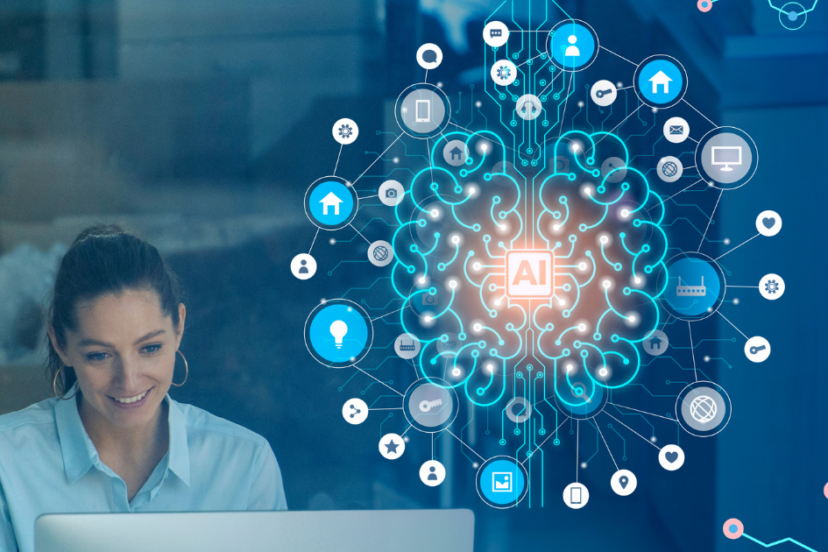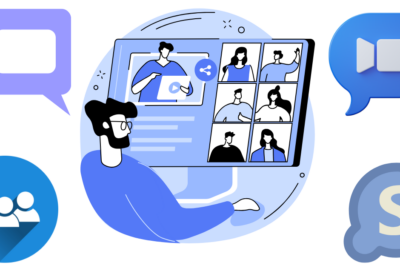How Artificial Intelligence Enhances Digital Learning
In today’s world, learning doesn’t have to be boring or one-size-fits-all. Thanks to artificial intelligence (AI), how we learn has become super cool and personalized. Imagine having your own digital tutor who knows exactly what you need to learn and how you learn best. Well, that’s what AI is doing for digital learning! In this blog, we will explore how AI enhances digital learning.
We’ll see how it makes learning more fun, like playing a video game, and excitingly helps teachers and students. Whether you’re a teacher wondering about the future of education or a student looking for new ways to learn, this blog is your guide to the excellent ways AI is making education better.
So, get ready to discover how AI is making learning a blast. We’ll talk about personalized learning, smart study buddies, and more. Learning is about to get much cooler with AI leading the way. Let’s get started!
What is digital learning?
Digital learning, often called e-learning, is an educational approach that uses digital technology and the internet to deliver educational content and facilitate learning. It encompasses many learning activities and resources accessible through digital devices such as computers, tablets, and smartphones. Digital learning can take various forms, including online courses, interactive educational websites, video lectures, virtual classrooms, and educational apps.
Digital learning has revolutionized the acquisition of knowledge and skills. It offers flexibility, accessibility, and the ability to learn at one’s own pace. However, integrating artificial intelligence has dramatically enhanced the effectiveness of digital learning.
Advantages of Digital Learning
1. Flexibility and Accessibility:
Digital learning allows learners to access educational content from anywhere, anytime, as long as they have an internet connection. This flexibility is precious for individuals with busy schedules, working professionals, or those needing more accessible access to traditional educational institutions.
2. Self-Paced Learning:
Digital learning allows learners to progress at their own pace. They can review and revisit materials as often as needed to grasp a concept fully. This self-paced approach accommodates both fast and slower learners, promoting better understanding.
3. Cost-Efficiency:
Compared to traditional classroom-based education, digital learning can be cost-effective. It eliminates the need for physical textbooks, commuting expenses, and classroom facilities. Many online courses and resources are free or cheaper than traditional educational options.
4. Environmental Sustainability:
Digital education isn’t just transforming the way we learn and helping us take significant steps toward a more sustainable and eco-friendly future. By reducing the carbon footprint, conserving trees and paper, minimizing waste, and embracing energy efficiency, digital education contributes to a cleaner and greener planet for future generations. It’s a win-win situation where learners benefit from accessible and interactive education while the Earth benefits from reduced environmental harm.
5. Adaptive and Continuous Learning:
Some digital learning platforms employ adaptive learning technologies that adjust the difficulty of content based on a learner’s progress. This ensures that learners are consistently challenged at an appropriate level. Digital learning encourages a culture of constant learning. Learners can access updated content and stay current in their fields, making it particularly valuable for professionals seeking to upskill or reskill.
How AI Enhances Digital Learning
AI has the potential to significantly enhance digital learning experiences by providing personalized, adaptive, and efficient education. Here are ten ways AI can improve digital learning, explained in detail:
Personalized Learning Paths:
AI algorithms can analyze each student’s learning patterns and progress. Based on this analysis, AI can customize individual students’ learning paths, tailoring the content and pace to match their abilities. This personalization ensures that students receive the right level of challenge and support, optimizing their learning outcomes.
Adaptive Assessments:
AI-driven assessments can adapt in real-time based on a student’s responses. If a student answers a question correctly, the system can present more challenging questions while offering additional practice for incorrect answers. This adaptive approach provides a more accurate assessment of a student’s knowledge and helps identify areas that require improvement.
Intelligent Content Recommendations:
AI can analyze a student’s learning history and preferences to recommend relevant educational content. For instance, AI might suggest specific video tutorials or practice exercises on algebraic concepts if a student struggles with algebra. This ensures that students receive resources that align with their needs and interests.
Instant Feedback and Assistance:
AI-powered chatbots or virtual tutors can offer immediate help to students when they encounter challenges. Students can post questions and receive immediate responses when working on a project or solving a problem. This on-demand support fosters a sense of autonomy and encourages students to seek assistance when needed.
Content Generation:
AI can generate educational content, including quizzes, practice problems, and textbooks. Educators can save time by using AI-generated materials, and these resources can be continuously updated to align with the latest curriculum standards.
Early Intervention:
AI can identify students at risk of falling behind by analyzing their performance and behavior. Students who are falling behind their peers can be brought up to speed through the use of early intervention measures like the provision of supplemental materials or one-on-one tutoring.
Data Analytics for Educators:
AI provides educators with data-driven insights into student performance. Teachers can use dashboards showing class and student-wide trends to better inform their instruction and curriculum development.
Accessibility and Inclusivity:
AI-driven tools, such as speech recognition and text-to-speech technology, can make learning more accessible to students with disabilities.
These tools enable students with different learning needs to participate fully in digital learning environments.
Global Education:
Digital learning connects learners with a worldwide community of students and educators. AI can break down language barriers by providing real-time language translation. This enables students worldwide to collaborate, share knowledge, and access educational materials, fostering cross-cultural learning experiences.
Conclusion
To conclude our journey on how AI enhances digital learning, it is clear that the future holds the promise of even more exciting developments. AI will become even more sophisticated, making education accessible to people from all walks of life. Imagine mastering new skills with a virtual teacher who knows your strengths and weaknesses better than anyone.
But, like any hero’s journey, there are challenges to overcome. Privacy concerns and the fear of AI replacing human educators are genuine worries we must address. It’s not about humans versus machines; it’s about humans and machines working together to unlock the full potential of education.
So, fellow learners, embrace the future, keep your curiosity alive, and never stop exploring. With AI as our ally, the possibilities for learning are boundless! So, are you ready to embrace the AI-powered future of education? The classroom of tomorrow is here today, filled with endless possibilities.





Comments are closed.